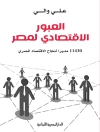Give your business the edge with crowd-power!
Crowdsourcing is an innovative way of outsourcing tasks, problems or requests to a group or community online. There are lots of ways business can use crowdsourcing to their advantage: be it crowdsourcing product ideas and development, design tasks, market research, testing, capturing or analyzing data, and even raising funds. It offers access to a wide pool of talent and ideas, and is an exciting way to engage the public with your business.
Crowdsourcing For Dummies is your plain-English guide to making crowdsourcing, crowdfunding and open innovation work for you. It gives step-by-step advice on how to plan, start and manage a crowdsourcing project, where to crowdsource, how to find the perfect audience, how best to motivate your crowd, and tips for troubleshooting.
Tabla de materias
Introduction 1
About This Book 1
Conventions Used in This Book 2
What You’re Not to Read 2
Foolish Assumptions 3
How This Book Is Organised 4
Part I: Understanding Crowdsourcing Basics 4
Part II: Looking at the Different Forms of Crowdsourcing 4
Part III: Building Skill 4
Part IV: Getting All You Can Get from the Crowd 5
Part V: The Part of Tens 5
Icons Used in This Book 5
Where to Go from Here 6
Part I: Understanding Crowdsourcing Basics 7
Chapter 1: People Power: Getting a Feel for Crowdsourcing 9
What is This Thing Called Crowdsourcing? 10
Seeing how crowdsourcing works 10
Looking at crowdsourcing forms 11
Considering Why People Crowdsource 13
Introducing three key strengths 13
Benefitting from crowdsourcing 14
Considering reliability 15
Being a Crowdworker 16
Becoming a Crowdsourcer 17
Chapter 2: Getting to Know the Forms of Crowdsourcing and Crowdmarkets 19
Harnessing the Power of Divided Labour 20
Keeping the job whole 20
Splitting the job into big pieces 21
Dividing the job as small as you can 22
Letting the crowd divide the job 23
Using crowdsourcing to raise money 24
Looking at the Rules that Govern How Crowdmarkets Work 25
Distinguishing between contract and contest markets 27
Understanding collaborative and independent crowdworking 27
Combining the two rules 28
Chapter 3: Infiltrating the Crowd 29
Following the Crowdworker’s Steps 30
Taking Lessons from Your Time as a Crowdworker 32
Lesson 1: Crowdworkers have names and reputations 32
Lesson 2: Crowds need training 33
Lesson 3: Crowds want clear instructions 34
Lesson 4: Crowds are free to move 34
Joining the Staff of Wikipedia 35
Registering as a worker 35
Choosing a task 36
Completing a task 36
Submitting a task 36
Leaping into the Market with Amazon’s Mechanical Turk 37
Registering as a worker 37
Selecting the task 38
Qualifying and completing the task 39
Donning the White Lab Coat: Zooniverse 41
Chapter 4: Joining the Crowdforce 43
Deciding to Join the Crowdforce 44
Considering Your Options 46
Looking at microtasks 47
Competing for the contest 48
Lining up for macrotasks 48
Wading into self-organised crowds 49
Searching for careers in crowdfunding 50
Getting Up and Running on a Macrotask Crowdmarket 51
Choosing a market 51
Setting yourself up on the market 52
Building your portfolio 53
Protecting Yourself as a Macrotasker 53
Making the Bid in Macrotasking 54
The proposal 55
The covering letter 55
The résumé 57
Setting the price 57
Learning from the process 58
Completing the Macrotask 58
Remembering the goal 58
Communicate, communicate, communicate 59
Working across cultures 59
Keeping good records 60
Getting an extra recommendation 60
Part II: Looking at the Different Forms of Crowdsourcing 61
Chapter 5: Creating Crowdcontests 63
Reaping the Benefits of Crowdcontests 63
Deepening understanding 64
Faster, better, cheaper 65
Understanding Types of Crowdcontest 66
Running a Crowdcontest 67
Stating the goal 68
Writing the rules 69
Publicising the results 72
Improving the Crowdcontest 73
Splitting the contest 74
Building a stronger crowd 75
Running a series of contests 76
Considering an Example: The Business Logo 76
Running a logo contest yourself 76
Using a contest service to run the contest for you 77
Chapter 6: Raising Money with Crowdfunding 79
Knowing the Basics of Crowdfunding 80
Seeing crowdfunding as a community activity 80
Using the crowdmarket 81
Deciding between all-or-nothing funding or partial funding 82
Understanding the fee 83
Running a Crowdfunding Project 84
Writing the budget 84
Describing your project 85
Setting a deadline for a decision 86
Contacting the crowd 87
Considering an Example: Creating a Playground 88
Building a budget 89
Writing a letter 89
Setting a timeline 89
Getting the crowd 91
Accumulating Equity for a Company 91
Making a pitch 92
Using a platform 93
Paying the fees and getting the funds 93
Attracting the crowd 95
Waiting for results 96
Examining the results 96
Using non-equity funding 98
Chapter 7: Making Use of Macrotasks 99
Getting to Grips with Macrotasking 100
Seeing the Benefits of Macrotasks 101
Identifying Macrotasks 103
Thinking process, not organisation 103
Identifying independent tasks 105
Choosing what’s important 105
Finding a fixed deadline 106
Requiring special skills 106
Preparing the Macrotask 107
Naming the manager107
Putting together a statement of work for macrotask workers 108
Beginning the Macrotask 110
Choosing a site 111
Posting the project 111
Inviting workers to your job 112
Choosing a Macrotasker 112
Reading the covering letter 113
Reviewing the proposal 113
Assessing the portfolio 113
Checking the reputation 114
Judging qualifications 114
Interviewing 115
Making the selection 116
Managing the work 117
Protecting intellectual property 118
Ending the Macrotask 118
Paying the macrotasker and closing the books 118
Assessing the experience 119
Considering an Example: Creating an App 119
Checking that your task is a macrotask 120
Writing the statement of work 120
Posting the job 121
Hiring the macrotasker 122
Following the work 122
Ending the macrotask 123
Chapter 8: Managing with Microtasks 125
Identifying Tasks That You Can Microsource 125
Knowing How the Microtasking Process Works 127
Keeping tasks short and simple 127
Creating the basic task 128
Finding the basic data 128
Writing the instructions 130
Pricing the tasks 131
Training and validating workers 132
Checking the results 132
Assembling the work 134
Working through an Example with Mechanical Turk 135
Creating the task 135
Laying out the work 138
Starting with a test run 142
Reviewing the work and retrieving the results 143
Reviewing the prices of your microtasks 144
Chapter 9: Combining the Intelligence of Self-Organised Crowds 145
Getting to Grips with Self-Organised Crowds 146
Determining What You Need the Crowd to Do: Information Gathering and Decision Making 147
Gathering information 148
Making a decision 150
Gathering and deciding 150
Designing the Process 151
Finding the crowd 152
Preparing clear rules 153
Motivating the crowd 154
Looking at the results 155
Organising a Prediction Market 156
Finding prediction markets 157
Establishing the rules 158
Laying down the rules 159
Assessing the result 160
Part III: Building Skill 161
Chapter 10: Engaging the Crowd with Your Project 163
Getting Started with Crowdbuilding 164
Knowing what motivates the crowd 164
Identifying the talent and resources you need 165
Adapting your strategy for public and private crowds 165
Inviting People to Join Your Crowd 166
Seeding the crowd 166
Engaging on You Tube 167
Granting bragging rights 168
Fostering Community Spirit 168
Building an online base 169
Showing how tasks contribute to the overall goal 170
Identifying benefits 170
Updating the crowd on progress 171
Sustaining the Crowd’s Interest 171
Teaching and Training 172
Showing the outcome 172
Leading the crowd through the tasks 173
Engaging on You Tube (again) 173
Chapter 11: Instructing the Crowd 175
Preparing the Fundamental Message: Writing a Statement of Work 176
Structuring carefully 176
Making clarity your goal 179
Looking at an example statement of work 181
Connecting the Kneebone to the Thighbone: Creating Instructions 182
Thinking about who does what to what 183
Deciding the order of instructions 184
Getting Feedback on Your Guidance 185
Chapter 12: Crowdsourcing with Social Media 187
Knowing the Benefits and the Limitations of Social Media Crowdsourcing 187
Building a Private Crowd with Social Media 189
Doing Simple Crowdsourcing with Social Media 191
Crowdfunding: Fundraising with Facebook 191
Macrotasking: Looking for freelancers with Linked In 192
Crowdcontests: Turning to Twitter 193
Microtasking: Translating via a blog 194
Turning the Process Upside Down: Using a Crowdsourcing Tool 195
Crowdfunding: Going fundraising 195
Crowdcontests: Modifying marketing methods 196
Microtasking and crowdsurveys: Asking for Opinions on Facebook 197
Microtasking: Reading the tweet leaves 198
Recognising the Difference between Social Media and Social Research 200
Chapter 13: Picking Your Platform 203
Getting the Benefits of a Platform 204
Raising the crowd 204
Knowing what other people know 205
Using standardised crowdsourced services 205
Getting a helping hand with bookkeeping 207
Cutting the risk factor 208
Finding the Right Crowd 208
Reviewing products 209
Checking out individual portfolios 210
Looking for the Right Support 210
Guiding your project 211
Acting as mediator 211
Protecting intellectual property 212
Deciding How Much You Want to Do 213
Reading the Fine Print 214
Understanding the cost 214
Expecting a refund 215
Knowing your responsibilities 215
Doing a Little Comparison Shopping 216
Checking out the contest providers 217
Connecting with the macrotaskers 217
Looking at options for microtasking 217
Finding the best funders 219
Chapter 14: Managing Your Crowd 221
Starting with the Right Balance of Skills 221
Choosing the Right People 223
Managing the Crowd through the Project 224
Using a consistent voice 224
Keeping in touch 225
Tracking milestones 226
Giving the crowd space to work 227
Respecting Workers’ Rights 228
Keeping on Top of the Details: Payroll and Accounting 229
Incentivising to Build Quality 230
Rewarding best practices 230
Taking inspiration from gamification 231
Recognising Trouble 232
Knowing your options 233
Computing the price of failure 234
Treating the cause, not the symptom 234
Stopping a Project 234
Exiting firmly and gracefully 235
Protecting your intellectual property 235
When Crowds Attack: Dealing with Angry Crowds 236
Assessing the situation 236
Handling a discontented worker 237
Recognising structural problems 238
Managing the public relations problem 239
Chapter 15: Learning on the Job 241
Following the Cycle of Continuous Improvement 242
Using the Cycle in Crowdsourcing 244
Anticipating trouble 245
Keeping an eye out for stumbling blocks 245
Reading the signs from the crowd 249
Handling the Unexpected 249
Accepting bad results 250
Stopping, revising and restarting 250
Demanding a refund 251
Paying and trashing 252
Lowering the Stakes with a Pilot Run 253
Adapting a Crowdfunding Campaign According to Results 254
Changing the means and the message 255
Changing your platform 255
Changing the goal 255
Part IV: Getting All You Can Get from the Crowd 257
Chapter 16: Combining Microtasks and Preparing Workflow 259
Discerning the Difference between Parallel and Serial Microtasks 260
Doing the job all at once: Parallel tasks 261
Putting one thing after another: Serial tasks 262
Minimising Error 265
Appreciating the value of serial tasks 265
Duplicating parallel tasks 266
Working through an Example: Devising Workflow and Making Decisions in Mechanical Turk 267
Starting with parallel tasks 269
Advancing to serial tasks 270
Combining parallel and serial tasks 270
Going for Gold: The Many Benefits of Workflow 271
Chapter 17: Crowd Reporting: Using the Crowd to Gather Information and News 273
Understanding Why People Use Crowd Reporting 274
Sorting Eight Billion Stories 274
Helping the crowd focus 275
Combining amateurs and experts 275
Gathering Information Geographically with Ushahidi 277
Rallying the crowd to Ushahidi 279
Deploying Ushahidi 279
Summarising the results 280
Getting the Benefits while Avoiding the Perils of Crowd Reporting 281
Understanding the nature of the crowd 282
Knowing who’s talking: The crowd effect 284
Knowing what the crowd believes: Gresham’s Law 285
Chapter 18: Initiating Innovation 287
Understanding the Forms of Innovation Crowdsourcing 288
Asking for a Little Insight: Classes of Innovation 290
Crowdsourcing for novelty 290
Crowdsourcing for improvement 291
Crowdsourcing for advantage 292
Planning for Innovation 292
Planning for new ideas 293
Bringing the unexpected into your plan with a crowdcontest 294
Running with the Right Crowd 299
Knowing the different types of crowd 299
Matching your plans with the best crowd 300
Building New Products and Services with Co-creation 303
Generating ideas and defining products 304
Designing with the crowd 305
Testing, testing, testing 305
Giving the product to the world 306
Considering an Example: Restructuring a Business with Inno Centive 306
Chapter 19: Preparing Your Organisation 309
Focusing on Crowdsourcing Elements of Processes 310
Planning for the Future 312
Navigating a Trial Run 313
Building Commitment 314
Knowing the Limits 315
Bracing for the Unknowns 316
Part V: The Part of Tens 317
Chapter 20: Following the Future of Crowdsourcing: Ten (Or So) Websites to Watch 319
Discovering the State of Crowdsourcing: Crowdsourcing.org 320
Reading the Morning News: Daily Crowdsource 321
Getting the European Perspective: crowdsourcingblog.de 321
Meeting the Leaders: Crowd Conf and Crowdopolis 322
Tracking Equity Crowdfunding: Crowdcube and Indiegogo 323
Monitoring the Growth of the Global Crowd: Clickworker and Trabajo 324
Expanding the Scope of Crowdcontests: Kaggle 325
Promoting Innovation: AHHHA and Innovation Exchange 326
Building New Microtasking Platforms: Mobile Works and Tagasauris 326
Macrotasking in the Boardroom: 10EQS 327
Chapter 21: Ten Best Practices to Adopt 329
Doing Things Step by Step 329
Copying What Others Have Done 330
Paying Attention to the Price 331
Talking with Your Crowd 331
Listening to the Crowd 332
Using Social Media 332
Publicising Accomplishments 333
Bringing the Crowd into the Decisions 333
Doing the Same Job Two Ways 334
Giving a Gift to the Crowd 334
Chapter 22: Ten Success Stories 335
Creating the SXSW Festival T-shirt 335
Developing Smith & Kraus’s Mobile App 336
Spending Time with Mr Bentham 337
Generating a New Movie Recommendation Method for Netflix 338
Building a National Treasure Trove 338
Running a Video Campaign for Audio-Technica 339
Getting USA Today on Mobile Phones 339
Analysing Viruses with Foldit 340
Writing Descriptions for Magnum Photos 341
Setting up Coffee Joulie with the Crowd’s Backing 342
Chapter 23: Ten Crowdsourcing Blunders to Avoid 343
Thinking Crowdsourcing Is Easy 343
Failing to Review the Work of the Crowd 344
Not Knowing Who’s in the Crowd 345
Failing to Do a Trial Run 346
Putting the Crowdsourcing Ahead of the Job 347
Losing Your Reputation 348
Hiding from the Crowd 349
Assuming That All Crowdworkers Understand 350
Having Too Much Faith in the Market 351
Index 353
Sobre el autor
David Alan Grier is a writer, teacher and consultant on labour, technology, communication and management. He is Associate Professor at George Washington University, where he teaches International Science and Technology Policy. He is also the 2013 President of the IEEE Computer Society.












